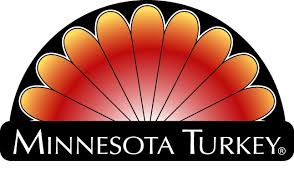Raising a small chicken flock for egg production in the backyard has increased in popularity.
General Considerations
- Check all local ordinances, zoning laws, and property association rules to see if you can raise chickens in your area.
- Follow laws and apply for permits if required.
- Roosters are not necessary in a flock for hens to lay eggs.
- Producing eggs in small flocks will always cost more.
- Chickens require daily care and monitoring. Develop a plan for who will care for the birds when you are away.
- Chickens must be fenced in for their own security.
- Manure/litter is a great soil amendment if composted properly.
Type of Birds
- All chickens will lay eggs.
- Chickens in most small flocks live 8 years, but they can live up to 12 to 15 years.
- Common heritage type breeds will lay 50 to 100 eggs a year. There is also great variability between strains.
- Commercial sex-linked hybrids will lay 240 to 280 eggs a year. They are a hardy yet docile bird, great for a small-flock setting.
- Egg shell color is determined by the breed and makes no difference in nutritional value or taste of the egg.
Feed and Water
- Provide a constant supply of fresh water. Clean out water daily.
- Feed free choice (feed available at all times).
- Store feed in a dry, dark metal container for up to 4 weeks.
- Proper feeder size, settings, and height saves feed.
- Keep feeder lip at back height.
- Provide a 3-inch feed space per bird.
- Only fill feed tray 2/3 full.
- Feed a complete ration specific to the bird’s age, body type, and state of production.
- Feed a chick starter diet for the first 0 to 6 weeks.
- Feed a chicken grower diet from 6 to 18 weeks.
- Feed a layer ration from 18 weeks on.
- Supplement oyster shells to older birds.
- Crack corn and scratch grain should not be fed to chickens. Avoid feeding high levels of human food or scraps.
- Only chicks under 4 weeks of age should be fed medicated feeds to prevent coccidiosis.
Proper Cooping
- Build a coop that provides 2 square feet per bird of indoor space.
- Limit drafts and moisture in the coop.
- Make sure predators cannot access the coop. Close birds in securely at night.
- Coop should be easy to access, clean, and maintain; designed to prevent injury to the birds; and provide natural lighting.
- Slippery surfaces will cause leg injuries.
- Use pine shavings or straw for bedding.
- Clean out any wet or compacted litter.
- Maintain the coop.
Lighting
- Layers require 14 to 16 hours of light daily.
- Add artificial light in the morning, and allow the birds to roost with sunset.
- One foot candle is full light for birds. Use a 25- to 40-watt bulb.
- Do not light adult birds for more than 16 hours daily.
Nesting Boxes
- Nests should be at least 12 by 12 inches.
- Provide two nests for the first four hens. Then add a nest for every four additional hens.
- Have a 3- to 4-inch lip in the front of the nests to keep nesting material in the box.
- Keep 3 inches of clean pine shavings in the nests.
- Place nests in a darker, secluded area off the floor and away from roosts.
Roosts
- Provide 6 inches per bird.
- Place roosts 18 to 24 inches above the floor, spaced 1 foot apart, and away from nests.
Egg Sale Laws
- Sell within 5 days of lay.
- Keep refrigerated at 45°F or lower.
- Do not use cartons from another business.
- Each carton must be labeled: name and address, date of packaging, statement of identity (eggs), net contents (in 3/16-inch letters), “Keep Refrigerated,” and “Unclassified” (unless you weigh the eggs).
Best Health Care Practices
- Never introduce adult birds into an established flock.
- Never mix different species in the same flock.
- Limit visitors from accessing your pens.
- Practice good sanitation of equipment.
- Practice “all in, all out” when changing flocks.
- Confine birds to a fenced area and limit contact with wild birds and predators.
- Keep rodents, flies & other animals out of the chicken coop and feed.
- Check for parasites monthly and treat if necessary. A dusting area can help prevent external parasites.
Additional Resources
Prepared by Phillip J. Clauer, Penn State Extension and Department of Animal Science. Photos provided by the Penn State Department of Animal Science.
This project was supported by Agricultural and Food Research Initiative Competitive Grant no. (2015-68004-23131) from the USDA National Institute of Food and Agriculture.









 When it is appropriate to add water to the system, remember the 80/80 rule: at 80⁰F (26.7⁰C) the relative humidity (or Rh) will be 80%. This occurs on average between 10:00 am and 10:00 pm, however, there are exceptions. The graph below shows that whenever the temperature reaches 80⁰F (26.7⁰C), the Rh is at the 80% mark. Adding moisture at this time will result in wet floors and hot birds because the air is saturated. For every 1 degree of cooling by adding water, the relative humidity goes up 2.5%. For example, at 10⁰F (-12.2⁰C) of cooling, you are adding 25% more humidity to the barn. You can see as the air heats up, the Rh falls, allowing for moisture to be added and cooling to take place.
When it is appropriate to add water to the system, remember the 80/80 rule: at 80⁰F (26.7⁰C) the relative humidity (or Rh) will be 80%. This occurs on average between 10:00 am and 10:00 pm, however, there are exceptions. The graph below shows that whenever the temperature reaches 80⁰F (26.7⁰C), the Rh is at the 80% mark. Adding moisture at this time will result in wet floors and hot birds because the air is saturated. For every 1 degree of cooling by adding water, the relative humidity goes up 2.5%. For example, at 10⁰F (-12.2⁰C) of cooling, you are adding 25% more humidity to the barn. You can see as the air heats up, the Rh falls, allowing for moisture to be added and cooling to take place.














